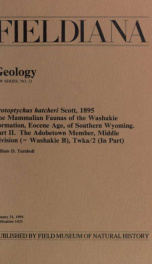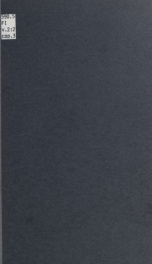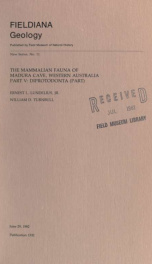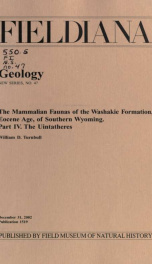This report was originally intended for the festschrift honoring Philip Hershkovitz (Patterson & Timm, 1987). I was unable to complete it in time for inclusion in that volume and subsequent events have caused further delays. It deals with a highly specialized Eocene rodent that is of particular interest paleontologically, anatomically, and ecologically. Intriguing, partially unresolved, phylogenetic considerations concerning its relationships are discussed. These suggest broader implications for rodent systematics. -- I expand upon the prior descriptions of the skull and teeth, and describe for the first time details of skeletal morphology of this jerboa-like species, Protoptychus hatcheri Scott, 1895, with its enlarged elongated hind limbs and greatly expanded auditory bullae, features that so aptly characterize these ricochetal creatures. The descriptions are based upon specimens recovered, mostly from a single locality, within the Washakie Basin of southwestern Wyoming. -- Protoptychus lived in a subtropical environment during the late Middle Eocene in Wyoming and Utah. The associated faunal and floral elements included alligators; softshelled turtles; rhinoceroses; a variety of insectivores, primates, and rodents; and palm trees. All have living members that usually are limited to the tropics or subtropics. Some other faunal associates such as gar fish, uintatheres, titanotheres, tillodonts, taeniodonts, achaenodonts, and hyopsodonts were probably similarly circumscribed, but the evidence for this is more tenuous; from wherever they are known, they are associated with the same or similar suites of tropically restricted forms. -- Stratigraphy, regional geology, and lithology give evidence of abundant stream channel and floodplain deposits. Doubtless, the main drainages supported some sort of riverine forests, and perhaps these extended along the borders of the intermittent ponds or central lake(s). But the presence of the jerboa-like Protoptychus suggests that the broad divides between the narrow, but lush, forested centripetal drainages of the Basin were probably arid, because today all such highly specialized living creatures occupy arid or semiarid environments. -- Phil, with his wide appreciation of ecological and environmental relationships of the modern faunas and with his extensive work on rodents, will be as intrigued by this animal as anyone. I therefore dedicate this account to him, for he is an esteemed and helpful friend and colleague. We have shared many, often lengthy and always stimulating, discussions of dental morphology and evolution, and sometimes these strayed into far more wide-ranging topics. For all of this, I am pleased to honor him in this manner Includes bibliographical references (p. 31-32) This report was originally intended for the festschrift honoring Philip Hershkovitz (Patterson & Timm, 1987). I was unable to complete it in time for inclusion in that volume and subsequent events have caused further delays. It deals with a highly specialized Eocene rodent that is of particular interest paleontologically, anatomically, and ecologically. Intriguing, partially unresolved, phylogenetic considerations concerning its relationships are discussed. These suggest broader implications for rodent systematics. -- I expand upon the prior descriptions of the skull and teeth, and describe for the first time details of skeletal morphology of this jerboa-like species, Protoptychus hatcheri Scott, 1895, with its enlarged elongated hind limbs and greatly expanded auditory bullae, features that so aptly characterize these ricochetal creatures. The descriptions are based upon specimens recovered, mostly from a single locality, within the Washakie Basin of southwestern Wyoming. -- Protoptychus lived in a subtropical environment during the late Middle Eocene in Wyoming and Utah. The associated faunal and floral elements included alligators; softshelled turtles; rhinoceroses; a variety of insectivores, primates, and rodents; and palm trees. All have living members that usually are limited to the tropics or subtropics. Some other faunal associates such as gar fish, uintatheres, titanotheres, tillodonts, taeniodonts, achaenodonts, and hyopsodonts were probably similarly circumscribed, but the evidence for this is more tenuous; from wherever they are known, they are associated with the same or similar suites of tropically restricted forms. -- Stratigraphy, regional geology, and lithology give evidence of abundant stream channel and floodplain deposits. Doubtless, the main drainages supported some sort of riverine forests, and perhaps these extended along the borders of the intermittent ponds or central lake(s). But the presence of the jerboa-like Protoptychus suggests that the broad divides between the narrow, but lush, forested centripetal drainages of the Basin were probably arid, because today all such highly specialized living creatures occupy arid or semiarid environments. -- Phil, with his wide appreciation of ecological and environmental relationships of the modern faunas and with his extensive work on rodents, will be as intrigued by this animal as anyone. I therefore dedicate this account to him, for he is an esteemed and helpful friend and colleague. We have shared many, often lengthy and always stimulating, discussions of dental morphology and evolution, and sometimes these strayed into far more wide-ranging topics. For all of this, I am pleased to honor him in this manner Fieldiana series has been published as Geological Series by Field Columbian Museum (1895-1909) and Field Museum of Natural History (1909-1943), and as Fieldiana: Geology by Chicago Natural History Museum (1945-1966) and Field Museum of Natural History (1966-1978). Fieldiana Geology New Series No. 1 began June 29, 1979













